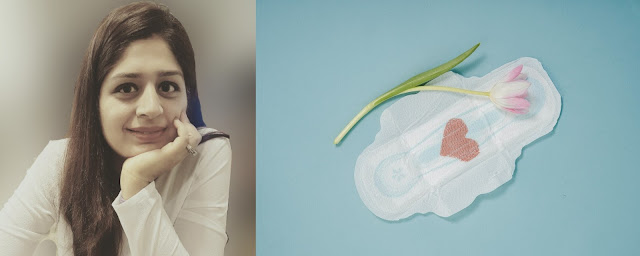 |
| Image Courtesy: Dr. Diksha S. Chadha, and Sora Shimazaki from Pexels |
Every year, approximately 7 billion sanitary napkins end up in landfills in India, and it takes nearly 500 to 800 years for a napkin to biodegrade. Is there a more sustainable and environment-friendly way? To find out, Adamas University hosted a 'Student sensitization session' with Dr. Diksha S Chadha, M.D (Preventive Medicine) to address 'Sustainable Menstrual Hygiene,' where she explained the environmental impact of sanitary pads and tampons.
Dr. Diksha S Chadha is a gold medalist doctor with an advanced degree in Preventive Medicine from Safdarjung Hospital, New Delhi. She’s the Founder of ‘Purple Nest’, an initiative by Dr. Chadha, which offers an Antenatal & Birth Preparedness Program designed for pregnant women; in other words, it prepares women for pregnancy, labour, delivery, childbirth and first year of life as a new parent. During the educative session, she shed light on the environment-friendly alternatives to the non-biodegradable sanitary napkins for sustainable menstruation.
The doctor stated why sanitary napkins take years to biodegrade:
"A sanitary pad is largely comprised of plastic, and one sanitary napkin is equal to four plastic bags, which is why it takes hundreds of years to breakdown a single sanitary pad."
She also highlighted the hidden toxic chemicals in pads, which are not often labelled on the box of these items. However, she emphasised that sanitary pads are not a financially viable alternative, since they are expensive and out of reach for many women.
She further mentioned the environment-friendly alternatives to sanitary pads such as biodegradable pads, reusable cloth pads and menstrual cups. However, she did highlight one such product that is “Cash-free, Trash free, and Rash free,” which is a menstrual cup.
Menstrual cups, according to Dr. Chadha, are an inexpensive and more sustainable alternative for women to deal with their periods than pads or tampons. A menstrual cup is a type of reusable feminine hygiene product. It’s a small, flexible bell-shaped cup made of rubber or silicone that a woman inserts into her vagina to catch and collect menstrual fluid. It can be used for up to 12 hours, before being removed and cleaned to dispose of the fluid. A menstrual cup can last up to 10 years.
Dr. Chadha demonstrated on a life-sized model how a menstrual cup is used and how it can be reused with only a few easy steps. She went on to describe the sterilisation procedure of the cup, stating that it can be rinsed with hot water and soap between each insertion and sterilised in boiling water at least once each period.
In many regions of India, menstruation is still regarded as taboo, unclean, and dirty. However, usage of menstrual cups can be a relief for those who are in the rural areas in India due to the shortage of water and limited resources; although proper disposal remains a concern.
Author
Vasundhara Tiwari

Great to read this article. Really so much to know amongst the ocean of knowledge.
ReplyDeleteHi, I Read your blog and I feel it is a very wonderful, informative blog .
ReplyDeletePost a Comment